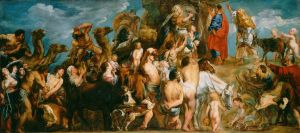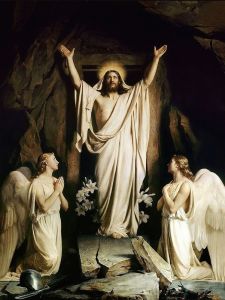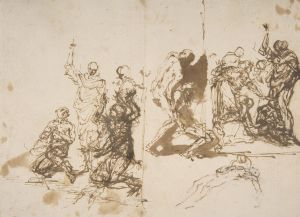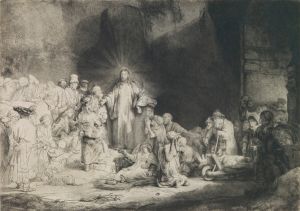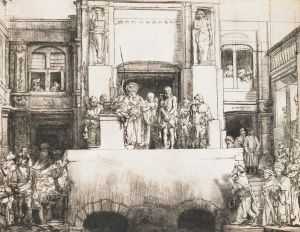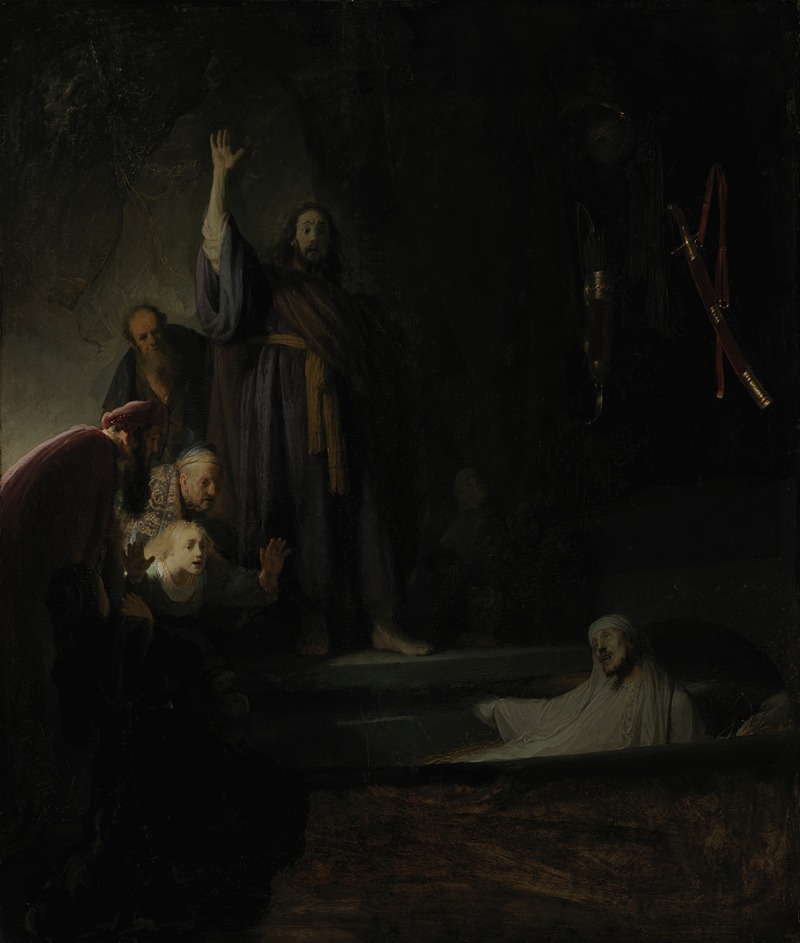
The Raising of Lazarus
A hand-painted replica of Rembrandt van Rijn’s masterpiece The Raising of Lazarus, meticulously crafted by professional artists to capture the true essence of the original. Each piece is created with museum-quality canvas and rare mineral pigments, carefully painted by experienced artists with delicate brushstrokes and rich, layered colors to perfectly recreate the texture of the original artwork. Unlike machine-printed reproductions, this hand-painted version brings the painting to life, infused with the artist’s emotions and skill in every stroke. Whether for personal collection or home decoration, it instantly elevates the artistic atmosphere of any space.
"The Raising of Lazarus" is a painting by the renowned Dutch artist Rembrandt van Rijn, created around 1630-1632. This work is one of Rembrandt's early masterpieces and is notable for its dramatic use of light and shadow, a technique known as chiaroscuro, which he employed to great effect throughout his career.
The painting depicts the biblical story of the raising of Lazarus from the dead, as recounted in the Gospel of John, Chapter 11. In this narrative, Jesus Christ performs one of his most significant miracles by bringing Lazarus back to life four days after his death. The moment captured by Rembrandt is one of intense emotion and divine intervention.
In the composition, Lazarus is shown rising from his tomb, his body still wrapped in burial shrouds. His face is illuminated by a divine light, symbolizing the miracle of his resurrection. Jesus stands to the left of Lazarus, his hand raised in a gesture of command, emphasizing his role as the divine agent of the miracle. The expressions of the onlookers, including Mary and Martha, the sisters of Lazarus, convey a range of emotions from awe to disbelief, capturing the human response to this miraculous event.
Rembrandt's use of light in this painting is particularly striking. The light source appears to emanate from Jesus himself, bathing Lazarus in a supernatural glow and casting the surrounding figures in deep shadow. This contrast not only heightens the drama of the scene but also underscores the spiritual significance of the miracle.
The painting is also notable for its composition and the way Rembrandt directs the viewer's attention. The diagonal lines created by the figures and the light lead the eye towards the central action, ensuring that the viewer's focus remains on the miraculous moment of Lazarus's resurrection.
"The Raising of Lazarus" is housed in the Los Angeles County Museum of Art (LACMA), where it remains an important part of their collection. The painting is a testament to Rembrandt's skill in rendering complex human emotions and his ability to convey profound spiritual themes through his art.
This work is an excellent example of Rembrandt's early style, which was characterized by a meticulous attention to detail and a deep interest in the human condition. It also foreshadows the more mature works that he would create later in his career, where he continued to explore themes of life, death, and resurrection with even greater depth and subtlety.
Overall, "The Raising of Lazarus" stands as a powerful representation of Rembrandt's artistic genius and his ability to bring biblical stories to life with a combination of technical mastery and emotional insight.






